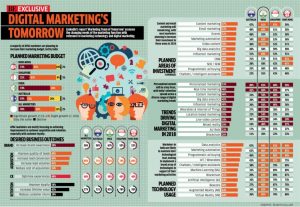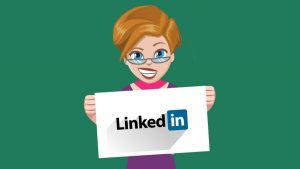As a Customer Success Manager at Radius, I am lucky enough to work with some amazing clients day in and day out. Some are startups who are brand new to outbound marketing while others are in the Fortune 500 and have helped shape marketing trends. No matter how different the company, the one constant is that multi-channel marketing (and ultimately omnichannel) produces significantly better results than being single threaded.
Check out this article by the Pedowitz Group to learn the difference between multi-channel marketing and omnichannel.
In this modern era where product information is expected to be readily available, many customers want to interact with businesses in ways that are convenient for them. The simple fact is: using one, single channel is impractical and insufficient.
Why is multi-channel marketing an effective strategy?
The benefits of multichannel marketing are widely documented, but in my opinion, there are 5 main reasons why marketers should adopt this approach:
- Build a cohesive brand experience – Prospects naturally patrol on multiple channels – it’s important to leverage each of these channel opportunities to connect with them or at the very least have them interact with your brand. By using a multi-channel strategy you are allowing prospects to choose where, when, and how they want to engage with you.
- Drive consistent campaigns that inform prospects – With multiple channels, you can ensure that your prospects are making informed decisions each time they interact with your brand through a consistent presence across a variety of touchpoints.
- Put your prospects in the buyer’s seat – What is the saying – “No one likes being sold but everyone likes to buy?” Having the choice to interact with your brand where it’s most convenient puts prospects in the driver seat to begin the buying journey. Multi-channel marketing makes it convenient for your prospects to learn about your company and gives them the right information on the right channels at the right time.
- Personalize your efforts for each prospect and buying journey – What works best for one person may not always resonate well with another. By being single threaded, your message may only impact a small portion of your potential market. Instead, navigate the new age of interconnected digital touchpoints by personalizing your outreach for each specific segment of your audience.
- Fine tune your marketing strategy by measuring each touchpoint – Marketing teams need to have an acute understanding of how to leverage channels in the context of each customer lifecycle. This ideal state of go-to-market strategy requires being able to target the right people at the right time – delivering insight and value with an integrated, multi-channel approach built on numerous factors. Multi-channel marketing allows you to measure what works and what doesn’t to refine this strategy.
So you may be wondering what you can do right now to implement this type of strategy? You’re not alone. According to a 2015 study by Econsultancy and Adobe, only 14% of marketers said they were running coordinated marketing campaigns across all channels.
To help address this challenge, I’ve highlighted three simple ways I’ve seen Radius customers engage their prospects across multiple channels.
3 examples of multi-channel marketing
It’s important to note here that these are just a few simple examples used by other leading businesses to leverage multi-channel marketing. While this is by no means a definitive list of campaign ideas, the goal here is to inspire you to rethink marketing strategy with multi-channel driving the change:
1) Combine digital ads with phone calls
Our customers have time and again seen an increase in conversions when they launch social campaigns prior to their sales reps making calls. Here’s an example – if you’re hosting a conference, try running a campaign to a Facebook custom audience promoting your brand a few weeks before the event. Then, a week or two before the conference, have your reps follow up on that same list with phone calls and emails. This not only gives your business multiple at-bats to drive attendees, but the digital ads help warm up the prospects for your sales team. Prospects tend to be more receptive to speak with companies that they are already familiar with.
2) Leverage email campaigns with social media efforts
There are multiple creative ways to integrate these two channels. One example is to monitor how prospects are interacting with your digital ads and then customize email campaigns based on levels of engagement. If someone has shown no interest, try following up with a softer email campaign educating them on who you are. If on the other hand, someone is engaging with multiple ads, an email that offers a clear call to action (ie: sign up for a trial) can be a great way to drive lower funnel leads.
3. Bring all channels together
The strategy I have seen the most success with is when customers tie all their channels together in one integrated effort. In fact, a report from SaS found that multi-channel strategies generated up to 24% higher conversion rates. In practice, this could include leveraging social to build awareness, email and direct mail to drive sign ups, and phone calls to initiate prospects into the sales process.
Wrapping it up
It’s no longer enough for marketers to use one, single marketing channel – you need to match the modern buyer’s journey and target prospects across multiple channels. The more effectively you get your message out there, the easier it will be for buyers to know who you are, what you do, and why they can benefit from your product or service.
Experiment with your available channels, use historical data to guide your testing and try to find the optimal mix of channels that gets you in front of the right prospects at the right time.
Business & Finance Articles on Business 2 Community(64)






